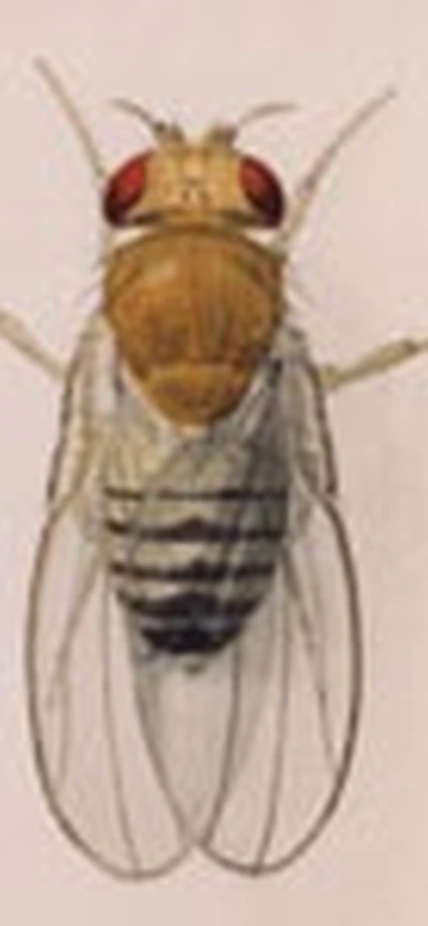Baltimore, MD — Insect glands are responsible for producing a host of secretions that allow bees to sting and ants to lay down trails to and from their nests. New research from Carnegie scientists focuses on secretions from glands in the reproductive tract that help sperm survive and guide the sperm on the trip to fertilize an egg. The gene that controls the development of these glands in fruit flies provides important information about gland development in all insects, as well as potential clues to similar human reproductive glands. Their work is published this month in Current Biology.
When a female fruit fly receives sperm from a male fruit fly, lubricating secretions in her reproductive tract activate the sperm, store it, and guide it to fertilization. Without the aid of these secretions, sperm would not make it to the eggs. Carnegie’s Allan Spradling and Jianjun Sun demonstrated that the gene in charge of regulating the development of fruit fly secretion glands is called Hr39. It encodes a steroid receptor protein.
Mutant fruit flies that lack this gene have no such glands formed in the reproductive tract and are infertile. However, their formation could be partially restored with the expression of a mouse gene that encodes an analogous steroid receptor in mammals called Lrh-1. Mutant mice that lack this gene are also infertile.
The work demonstrates that even though it has been millions of years since there was a common ancestor that links fruit flies to mice—and, more generally, insects to mammals—these similar genes are still in charge of at least some of the same functions.
Secretions from reproductive glands in mammals are thought to assist sperm in undergoing similar changes to facilitate fertilization. But studying this process has proved difficult. Knowing that the functions of Hr39 in fruit flies and Lrh-1 in mammals are similar in this regard will facilitate research.
“The fruit fly work in our paper provides a method for studying the cellular physiology governing this reproductive secretion process more quickly, cheaply and effectively than we had previously thought possible,” Spradling said.
Image Caption: Watercolor illustration of Drosophila by Edith M. Wallace, courtesy of the Carnegie Institution.
__________________
Spradling and Sun are funded by the Howard Hughes Medical Institute.
